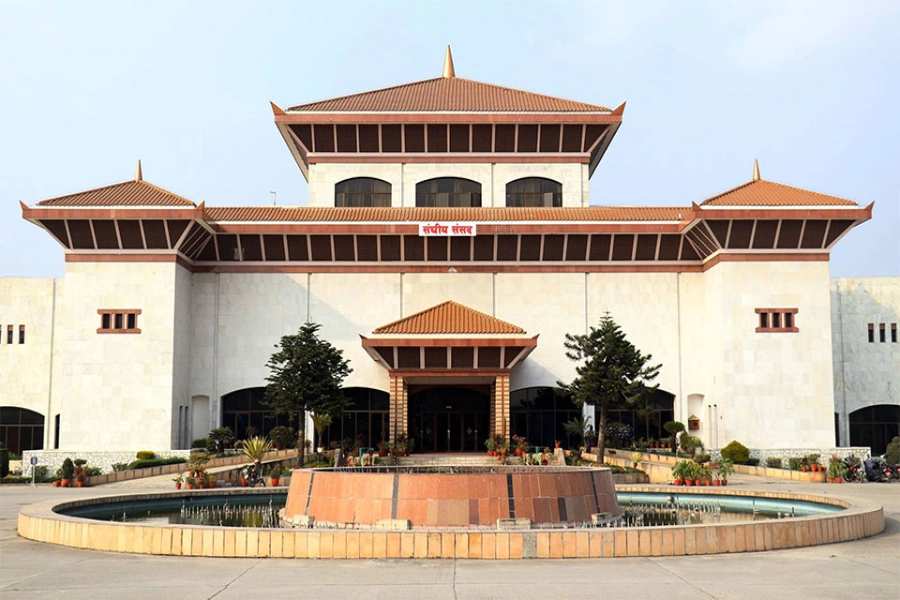Green schools in Nepal emphasized the need for sustainable development of education and the integration of environmentally friendly practices within educational institutions. Nepal is very rich in natural resources such as minerals, water, forest, medicinal herbs and varieties of agricultural products. For the economic development of the country exploitation and proper use of such valuable resources, especially mineral resources is extremely important. In recent years, there has been a growing awareness of the need to address environmental issues in Nepal, especially in the education sector. Hence, Green schools are emerging as a promising approach to address environmental concerns and promote sustainable development. Green schools are eco-schools which prioritize sustainable development and environmentally friendly practices in their operations, curriculum, and overall educational approach. These schools recognize the importance of environmental conservation and increase responsibility towards the environment for their students. Over the years, there has been a growing awareness of environmental issues in the education sector where climate change has become a major factor for environmental degradation which increases challenges for educators and policymakers to recognize the importance of environmental education into the curriculum and daily operations of schools. Moreover, green schools often engage students in hands-on activities, such as community gardening, recycling initiatives, and environmental projects, which provide practical experience and instill a sense of environmental responsibility. These initiatives not only contribute to sustainable development but also foster a sense of pride and ownership among students.
Green schools incorporate various features and practices that contribute to a healthier and more eco-friendly learning environment.In the Journal of A Comparative Study of Green School Guidelines published by; Nur Hidayahtuljamilah Ramli, Mawar Haji Masri, Mohd. Zafrullah Haji Mohd. Taib & Norhazarina Abd Hamid), there are certain characteristics of Green School which emphasized on energy conservation and natural resources which emphasized to reduce their energy consumption and minimize their impact on natural resources. Similarly, Green schools prioritize the health and well-being of students and staff by ensuring good indoor air quality. For example; Proper ventilation systems and air filtration help maintain clean and fresh air inside the school buildings. Green schools recognize the importance of natural light in learning environment. They design their buildings with adequate windows and skylights to maximize day-lighting, reducing the need for artificial lighting during the day. Green schools also aim to minimize water usage and conserve water resources, such as low-flow toilets and faucets, and may also implement rainwater harvesting systems for irrigation purposes.
SHIFT for Our Planet: Youths urge authorities to make climate j...

There are certain challenges for operating green schools in Nepal. One of the major challenges in implementing green school initiatives is the lack of awareness and knowledge about environmental issues among various stakeholders, individuals, communities, businesses, and governments. Many people may not fully understand the impacts of their actions on the environment. This lack of awareness can hinder the adoption of sustainable practices and policies. To overcome this challenge, educational and awareness campaigns are crucial. Likewise, implementing green schools often requires investments in infrastructure, technology, and training.
There are certain strategies for the implementation of green schools which includes Curriculum integration which help linking environmental education to academic disciplines. Similarly, engaging various stakeholders is crucial for the successful implementation of environmental education and providing training and professional development opportunities for educators is crucial for effective environmental education implementation.
Hence we can say that green schools are a promising approach to address environmental concerns. This means that adopting environmentally-friendly practices and integrating sustainability into the education system can help mitigate the environmental challenges and implementation of green schools and can create a sustainable learning environment that prepares students for responsible citizenship.
Finally, greening school means, climate change is integrated in school curriculum, promoting green zone in and around school, implement one school one garden concept, using school garden for home-grown midday meal, promoting school as net carbon zone and making school as catalyst for addressing environmental and climate crisis.





































